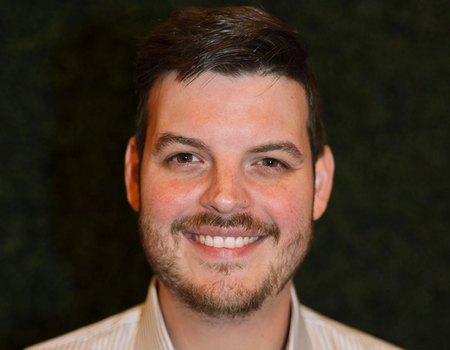
Civil Engineering Errors & Omissions (E&O) Insurance - Explained
·
8 minute read
As a civil engineer, you play an important role in the construction of the nation's infrastructure. From dams and bridges to utilities and even highways, many people rely on the structures and systems your projects focus on.
Because a civil engineer’s work is so integral to our daily lives, there are unique risks that come with the role. If a mistake happens on a project, you could be liable for the financial damages that your errors cause. A civil engineering errors and omissions (E&O)—or professional liability—policy, protects your business from these situations.
For more information about this specific type of insurance policy, check out our article, "What Is Errors And Omissions Insurance?"
Who do civil engineers purchase E&O insurance?
To Satisfy Client Requirements
A government agency or private company will often have specific insurance requirements when hiring an engineer to work on a project. The exact requirements can vary based on the size of the project, but clients often make E&O insurance a mandatory coverage for engineers, usually in addition to general liability, commercial auto, and workers compensation coverage.
To Protect The Business From Lawsuits
As a civil engineer, the largest liability you face is a potential mistake in your work that causes financial harm to another entity…and results in a legal battle. Many engineers purchase insurance to protect their business from loss and gain peace of mind.
Customized Insurance For Civil Engineering Firms
Stay ahead of potential risks with tailored E&O insurance. Request your quote today.
What does civil engineering errors and omissions insurance cover?
Liability From Mistakes In Your Work
The primary coverage provided under an E&O policy is liability arising from mistakes made in the professional services that you offer. This can be a small dispute with a contractor, or a large mistake that results in millions of dollars of damages.
Pollution-Related Claims
If a mistake or miscalculation in your work results in a pollution incident, many E&O policies will cover this. It is important to note that this coverage isn't included on all E&O policies, but is a feature offered by most insurance providers, so be sure to ask about this inclusion if it’s important to your business.
Inspection Oversights
If an oversight in one of your site inspections leads to financial harm for the client, that would be covered under many civil engineering errors and omissions insurance policies.
Rectification Expenses
Sometimes design defects are discovered mid-project after construction has started, but before an E&O claim is submitted (in other words, the client has not yet experienced financial damage). Rectification coverage allows you to submit the design issue to the insurance company and a proposed fix, and the insurance company will reimburse you for fixing the design flaw.
Legal Defense Costs
Due to the complexity of engineering E&O claims, defending yourself from lawsuits and accusations often incurs significant legal costs. Not only do you have to hire an expensive law firm with engineering expertise, but you need to pay for expert witnesses and other engineering firms to research the incident as part of your defense.
A civil engineering E&O policy covers the legal defense costs to defend you in court or settle a a dispute.
What does civil engineering E&O insurance cost?
Civil engineering E&O coverage usually starts at $1,000 per year and goes up from there. As your firm grows or works on larger projects, the premium will go up proportionally with the amount of risk your business faces. Additionally, insurance rates for professional engineers vary based on location—certain states cost more than others due to various laws that impact construction projects or construction defects.
LandesBlosch Tips For Civil Engineers
Know if your insurer can settle a lawsuit without your consent
If someone accuses you of professional wrongdoing and would accept a small settlement to resolve the issue, would you agree to pay? On one hand, it can make financial sense to avoid all the legal fees; on the other hand, a settlement could be viewed as an admission of guilt and might affect your professional reputation in the community.
Be aware that the decision about whether to settle might be taken out of your hands. Some insurance policies include a condition that your insurer can accept a settlement offer on your behalf, without your consent. While this is rarely an issue with a general liability policy, it can be a big deal with claims that could affect your professional reputation.
Ask your insurance broker whether your insurance company can settle a claim without your consent. Additionally, if you choose not to settle a claim, find out if there are penalties for moving forward with that legal dispute.
Try to get pollution coverage
As a civil engineer, you likely work with electrical wiring, groundwater, concrete, and other materials in many situations. If your work causes any sort of pollution event to occur, the costs can add up quickly. Not only can the potential involvement of the Environmental Protection Agency increase your costs through various fines and penalties, but you might be forced to clean up the pollution site, which can be a huge expense. Because of this high financial risk, we always recommend that civil engineers get pollution coverage as part of their E&O policy.
Ask if defense costs are included in the limit of insurance
E&O policies can work differently than the more common coverages, such as general liability. With general liability policies, the legal costs associated with defending a lawsuit do not count against your limit of insurance. Conversely, legal defense costs do erode your policy limit on most E&O policies, meaning you need to account for those costs when choosing your limit of liability.
That being said, not all policies erode the limit. Some E&O policies have unlimited defense costs (similar to general liability), and some have a separate defense cost limit. Be aware that this element of your E&O policy can vary and, depending on whether defense costs are included, plan accordingly for how much insurance you need to purchase.
Ask for full prior acts coverage
E&O insurance is a claims-made policy, which means there is a specific timeframe in which you can submit claims.
Generally with E&O insurance, the claim has to occur and be reported to the insurance company in the policy period. The policy period is usually the date you first purchased E&O coverage from that particular insurance carrier.
By purchasing full prior acts coverage, you change the coverage start date of the policy to include any claims that occurred in the history of your business. This allows you to turn in claims that might have occurred years ago, but aren’t currently aware of.
The Bottom Line
Civil engineering errors and omissions insurance is critical to protect your firm from lawsuits that arise due to mistakes in your work or services. If you are looking for more information on an E&O policy or need a quote, give our team a call or get started online.
About The Author: Austin Landes, CIC
Austin is an experienced Commercial Risk Advisor specializing in and leading LandesBlosch's design professional, real estate, and construction teams.
